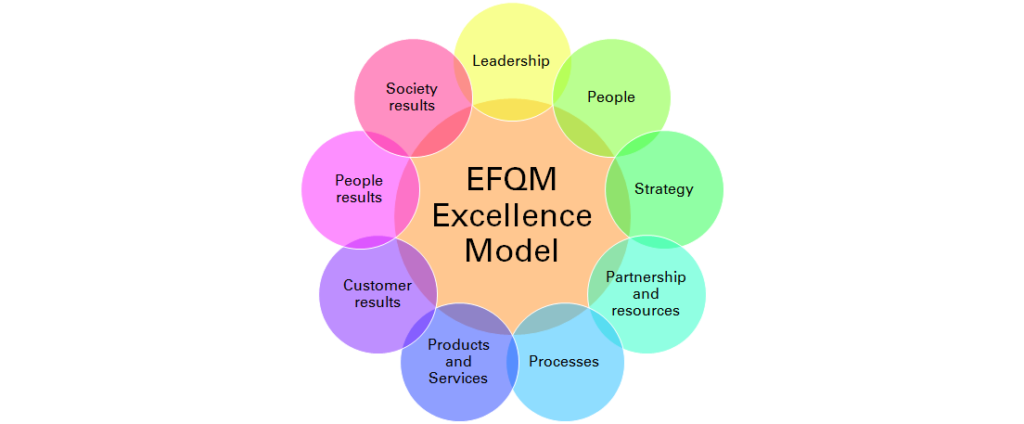In previous articles that explored the concept of High Performing Organization (HPO), we discussed the McKinsey 7S Framework and SWOT Analysis. In this particular post, we will delve into another model that assists organizations in achieving HPO status.
The EFQM Excellence Model is a management framework designed to help organizations achieve excellence and continuous improvement. The model was developed by the European Foundation for Quality Management (EFQM) in 1988, and since then, it has become one of the most widely used management frameworks in Europe and beyond. In this blog, we will discuss the EFQM Excellence Model, its key components, and how it can help organizations achieve excellence.
Key Components of the EFQM Excellence Model
The EFQM Excellence Model is based on nine key components, which are:

Leadership
This component refers to the leadership style and the vision of the organization’s top management. It includes the development and communication of a clear strategy, the setting of targets and objectives, and the alignment of the organization’s resources to achieve these goals.
People
This component refers to the people who work in the organization and their skills, knowledge, and motivation. It includes the recruitment, training, and development of staff, as well as the creation of a positive and supportive work environment.
Strategy
This component refers to the organization’s overall strategy and how it is developed and implemented. It includes the analysis of the external and internal environment, the identification of key drivers, and the development of a clear and actionable strategy.
Partnerships and Resources
This component refers to the partnerships and resources that the organization has and how they are managed. It includes the identification and management of key stakeholders, the optimization of resources, and the development of partnerships that support the organization’s goals.
Processes
This component refers to the processes and systems that the organization has in place to achieve its goals. It includes the design, implementation, and improvement of these processes to ensure they are effective and efficient.
Products and Services
This component refers to the organization’s products and services and how they meet the needs of its customers. It includes the development and delivery of high-quality products and services that are aligned with customer needs and expectations.
Customer Results
This component refers to the organization’s performance in meeting customer needs and expectations. It includes the measurement and analysis of customer satisfaction, loyalty, and retention.
People Results
This component refers to the organization’s performance in managing its people. It includes the measurement and analysis of employee satisfaction, motivation, and retention.
Society Results
This component refers to the organization’s impact on society and the environment. It includes the measurement and analysis of the organization’s social responsibility, environmental impact, and sustainability.
In conclusion, the EFQM Excellence Model is a valuable framework that can help organizations achieve excellence and continuous improvement. By focusing on a customer-centric, people-focused approach to business, organizations can improve their performance, enhance stakeholder relationships, and build a culture of excellence. While there are challenges to implementing the EFQM Excellence Model, including resistance to change, cost, and complexity, organizations that are committed to continuous improvement can overcome these obstacles and reap the benefits of the framework. Ultimately, the EFQM Excellence Model works, and its success depends on strong leadership, employee engagement, and a willingness to embrace change and continuous improvement. By adopting this approach, organizations can position themselves for long-term success and sustainable growth.
Wow! Thank you! I permanently needed to write on my blog something like that. Can I include a portion of your post to my site?
I am really impressed with your writing skills and also with the layout on your weblog. Is this a paid theme or did you customize it yourself? Anyway keep up the nice quality writing, it抯 rare to see a nice blog like this one these days..
Thanks and glad you liked it. Its a wordpress free theme customized according to my needs.
Such ingenuity!
naturally like your website however you have to test the spelling on quite a few of your posts. Several of them are rife with spelling problems and I to find it very troublesome to inform the truth on the other hand I’ll definitely come back again.
Thanks for your feedback. Will surely consider it.
Thanks for posting. I really enjoyed reading it, especially because it addressed my problem. It helped me a lot and I hope it will help others too.
Your articles are extremely helpful to me. Please provide more information!